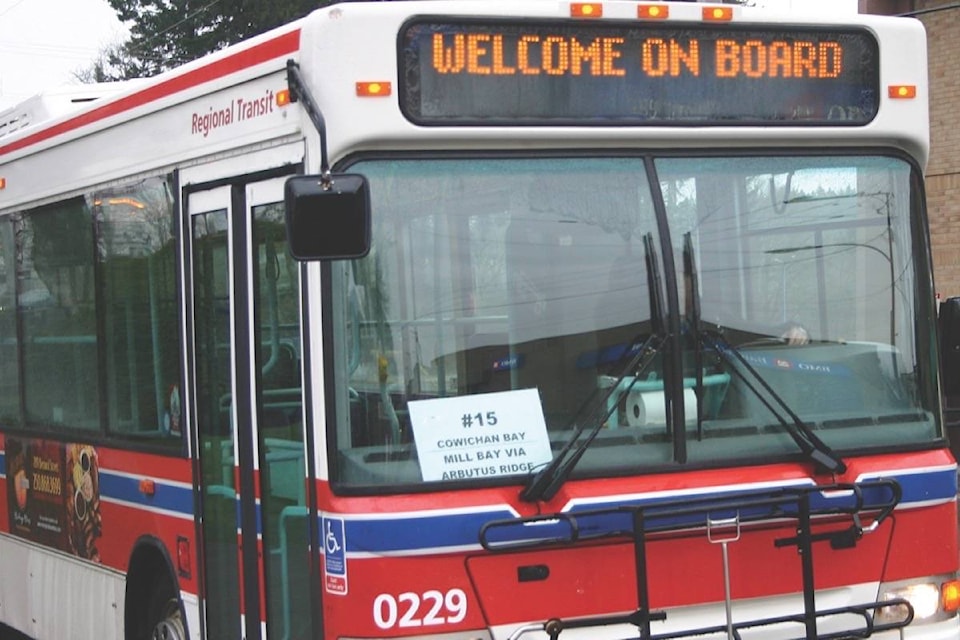Most communities have two transportation systems.
The first is a network of roads and parking facilities for motorists. The second includes sidewalks, paths, and public transit services. For many years, government policies and expenditures have disproportionately favoured motorists. Unfortunately, this bias persists, to the current and long-term detriment of our communities. It needs to change.
According to our analysis, British Columbia governments spend about $1,000 annually per capita on roads, $215 on urban transit subsidies, plus about $50 on sidewalks and bikeways, but less than $5 on interregional bus services, mostly on Highway 16 in Northern B.C.
This is unfair and inefficient. Motorists may be forced to drive when they don’t want to, and may be spending more on a private vehicle than they can afford. It also deprives non-drivers of independent mobility. A net effect is increasing motor vehicle traffic, and with it, an escalation of traffic congestion and delays, as well as global warming.
Current demographic and economic trends — aging rural populations, rising transportation costs, plus growing health and environmental concerns — all point to an increasing demand for transit on Vancouver Island to serve those needs.
Most motorists we talk with have little idea about the difficulties non-drivers face getting around. It’s not too bad in cities or larger towns where there are sidewalks, bikeways, and public transit networks, but connections and frequency are terrible on most Vancouver Island transit corridors.
For example, in the Cowichan Valley, it takes approximately 20 minutes to drive from downtown Duncan to downtown Chemainus. It is a desirable, local community with a variety of arts, music events, and restaurant options. It takes at least twice that time on a bus, and the rider must prepare for a two hour wait between return trips. The last trip back to Duncan leaves at 6 p.m. This prevents non-drivers from participating in evening activities, and businesses lose potential customers.
Travel to other communities is even worse. Between Victoria and Duncan there are only four daily buses, all oriented for Duncan commuters to Victoria, with $10 one-way fares. There are only three buses on Saturday, and no reverse commute, evening or Sunday service. Duncan residents can’t attend an evening concert or sporting event in Victoria using transit, and tourists cannot visit our region without a car. Because the service is inconvenient and expensive, less than one per cent of travellers use public transit.
In contrast, between Sooke and Victoria there are 43 daily buses with $2.50 fares. Because service is frequent and affordable buses serve 22 per cent of that corridor’s peak period trips. That level of transit ridership could greatly reduce Malahat traffic problems, saving tens of millions of dollars in annual vehicle and highway costs.
Why is transit service so good on some corridors and so bad on others? One reason may be because Sooke and Victoria are both in the Capital Regional District, and it is comparatively easy to plan their transit connections. Because Duncan is in the Cowichan Valley Regional District, there is no standard process for planning and funding transit connections between the two areas.
Currently, any interregional bus improvements require a multiyear planning process and 50 per cent regional match funding. That is unfair; it requires local governments to subsidize through travellers who do not live in or visit their communities. The province recently implemented the Five Point Action Plan which applies a much lower “enhanced” cost-sharing rate for Highway 16 bus routes in recognition that a 50 per cent local funding share is excessive for long-distance services.
To increase fairness and reduce traffic problems, Better Island Transit is asking the Minister of Transportation to fund more frequent and affordable Vancouver Island bus services. Specifically, we ask for at least hourly service on the #66 (Duncan to Victoria) and #70 (Duncan to Nanaimo) routes, including Sundays, with $5 maximum one-way fares, so travel between central and south Vancouver Island becomes much more convenient and affordable.
If you agree, please ask Minister of Transportation Rob Fleming (Minister.MOTI@gov.bc.ca), and your Member of the Legislative Assembly () for more provincial support for bus services on Vancouver Island and throughout our province.
Deanna Wilson is a Cowichan Valley Transit rider and Todd Litman is the president of Better Island Transit ()



